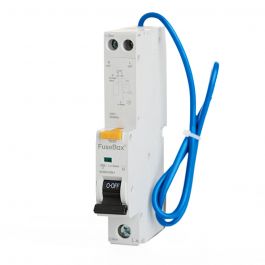- Reaction score
- 128
I have my tin hat on because I know this has been done to death and have read through a lot of the old posts.
I just wanted to run my proposal past a few of you and see if there is anything I have missed as its always good to get someone else's view.
Customer is needing a 32amp supply and hot tub company has said they require a 6mm supply with an isolator and flex left for them to connect.
My plan is to run a 10mm 3 core swa to a 40amp isolator from a new 2 way consumer unit Henley blocked from the tails. There is a Isolator on the current tails so will keep this and it will mean that there is one form of complete isolation. I have done the calculations and a 6mm will suffice with a volt drop of 11.2v so its on the borderline so hence going a larger size cable. It also allows for future proofing.
Now this is where it gets a bit messy. The supply to the property is PME. I intend to use the PME for the hot tub supply supplying it from a 32amp RCBO in the house. I am also intending to install an earth rod am I right in thinking that this gets installed at the hot tub end of the SWA? the idea is that should there be a PEN failure there is an earth path and the potential between the floating PEN earth and true earth is reduced as far as possible.
am I right in thinking that the rod does go at the hot tub end and not by the intake position of the property?
I am going to mount the isolator onto some uni strut installed into the ground. There is a fence panel 1 meter from the hot tub so too close to the tub. Also the fence doesn't seem too safe so I want to install my own support.
Finally they have also asked for a double socket by the tub again, I'm going to keep this 2 meters away from the tub. I am thinking of running a separate cable back to the house so this can be isolated as the customer is wanting to plug fairy lights in so the customer can switch them from the house. Im just wondering if i'm over complicating it though and should I just spur off the hot tub supply and install a fused spur and double socket
Thanks to any replys
I just wanted to run my proposal past a few of you and see if there is anything I have missed as its always good to get someone else's view.
Customer is needing a 32amp supply and hot tub company has said they require a 6mm supply with an isolator and flex left for them to connect.
My plan is to run a 10mm 3 core swa to a 40amp isolator from a new 2 way consumer unit Henley blocked from the tails. There is a Isolator on the current tails so will keep this and it will mean that there is one form of complete isolation. I have done the calculations and a 6mm will suffice with a volt drop of 11.2v so its on the borderline so hence going a larger size cable. It also allows for future proofing.
Now this is where it gets a bit messy. The supply to the property is PME. I intend to use the PME for the hot tub supply supplying it from a 32amp RCBO in the house. I am also intending to install an earth rod am I right in thinking that this gets installed at the hot tub end of the SWA? the idea is that should there be a PEN failure there is an earth path and the potential between the floating PEN earth and true earth is reduced as far as possible.
am I right in thinking that the rod does go at the hot tub end and not by the intake position of the property?
I am going to mount the isolator onto some uni strut installed into the ground. There is a fence panel 1 meter from the hot tub so too close to the tub. Also the fence doesn't seem too safe so I want to install my own support.
Finally they have also asked for a double socket by the tub again, I'm going to keep this 2 meters away from the tub. I am thinking of running a separate cable back to the house so this can be isolated as the customer is wanting to plug fairy lights in so the customer can switch them from the house. Im just wondering if i'm over complicating it though and should I just spur off the hot tub supply and install a fused spur and double socket
Thanks to any replys











